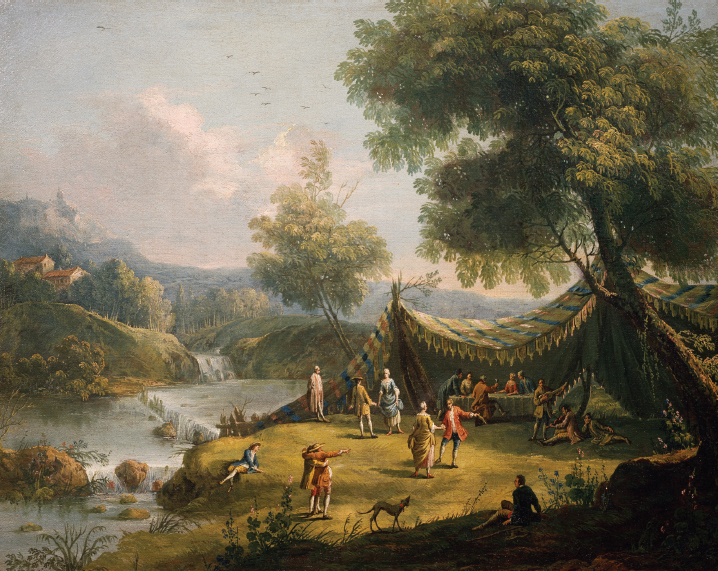Vivaldi’s Greatest Hits

In our day, a set of four concertos by Vivaldi is a runaway leader among favorite works from the Baroque era; it has been recorded over a hundred times! The set is called The Four Seasons, and it is special not just because of its virtuosic music for string orchestra and violin soloist but also because of what this music depicts. Each concerto is associated with a poem describing a season — its weather especially, but also activities, sights, and sounds: shepherd and sheep hiding from the blazing sun of summer, hunters coming out at dawn in the fall, the poet slipping on the ice of winter. Vivaldi captured all these things in the music of his concertos; so as to leave us no doubt, he even indicated in his published music which lines of poetry correspond to which passages of music.
This depiction makes The Four Seasons an early example of program music, instrumental music that tries to convey a story, actions, or events. Program music became especially popular in the nineteenth century, and we will come back to it for a closer look in Chapter 16.